You can setup PyX to pass unicode characters to (La)TeX. Then it all becomes a problem to produce the characters in question within TeX/LaTeX. Here is a rather minimal solution to produce the output in question:
from pyx import *
text.set(cls=text.LatexRunner, texenc='utf-8')
text.preamble(r'\usepackage[utf8]{inputenc}')
text.preamble(r'\usepackage{newunicodechar}')
text.preamble(r"\newunicodechar{あ}{{\usefont{U}{min}{m}{n}\symbol{'102}}}")
text.preamble(r'\DeclareFontFamily{U}{min}{}')
text.preamble(r'\DeclareFontShape{U}{min}{m}{n}{<-> udmj30}{}')
c = canvas.canvas()
c.text(0, 0, 'UID: aあä')
c.writeGSfile('utf8.png')
This directly results in the output (as PNG as uploaded here): 
Note that this was done using PyX 0.13 on Python 3 and a rather standard LaTeX installation. Also, I used some information from https://tex.stackexchange.com/questions/171611/how-to-write-a-single-hiragana-character-in-latex about creating those characters in LaTeX. There seem to be solutions like CJKutf8 to setup all kind of characters for direct use as unicode characters within LaTeX, but this is way out of my experience. Anyway, it should all work fine from within PyX like it does from LaTeX itself if all the setup has been done properly. Good luck!
